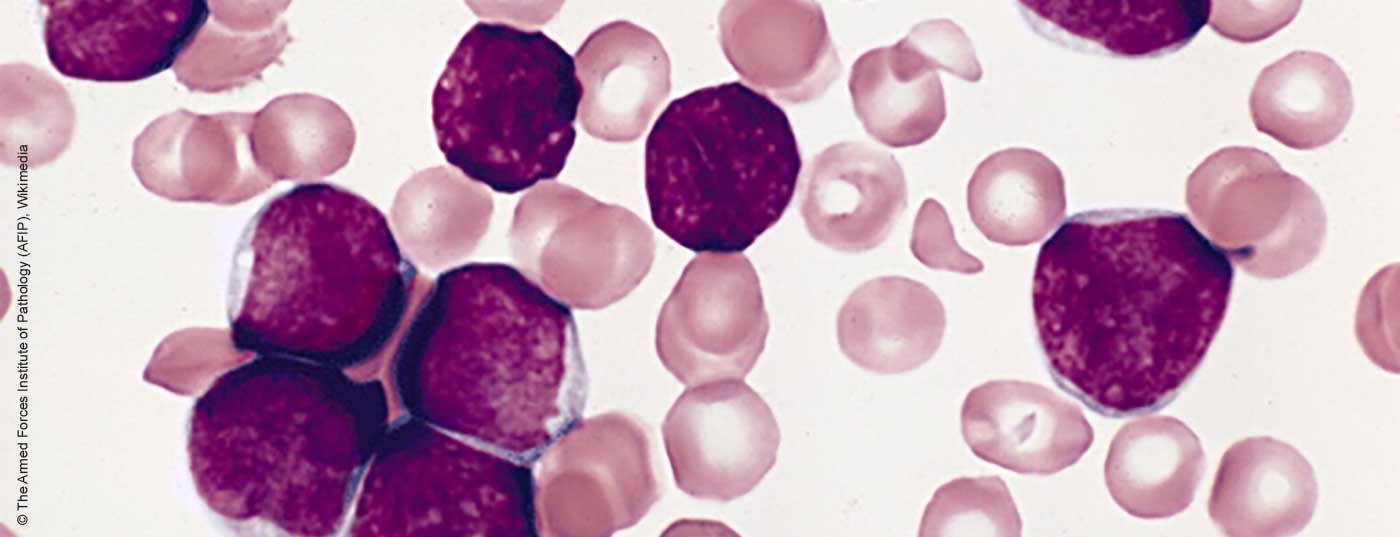A global study on cancer mortality comes to astonishing results. International differences in childhood leukemias are substantial. Switzerland performs well overall, but still has room for improvement in one or two areas.
Leukemias are a heterogeneous group of diseases with largely unknown etiology that are among the most common childhood malignancies. Most of these are acute lymphoblastic leukemias (ALL); far rarer are acute myeloid leukemias (AML) in childhood. Since the 1990s – where the survey began – diagnostic capabilities and therapeutic protocols have once again evolved significantly. However, resource scarcity and insurance inadequacies significantly limit access in many countries and ensure that far from all those affected benefit from advances in science [4].
CONCORD
The analysis is based on the so-called CONCORD program, which already produced a global comparison of survival trends in the population of children with leukemia more than two years ago [3]. The data had shown striking differences in the adjusted 5-year survival of children with precursor ALL (B precursor ALL is the most common childhood ALL) between different countries – this over the period from 1995 to 2009. The current analysis took aim at extending the results, including to additional subtypes of childhood leukemias.
Almost 90,000 children from 53 countries
The study included 89,828 children from a total of 198 cancer registries who had received a leukemia diagnosis between January 1995 and December 2009. Thereafter, individual progression was followed up over the same period of time. Doubtful data and registers with less than ten cases were not considered. The end point was 5-year adjusted survival, that is, probable survival after statistically controlling for deaths from other causes, by period (1995-1999, 2000-2004, and 2005-2009) and age of diagnosis (<1, 1-4, 5-9, and 10-14 years) and by sex.
The scale of the CONCORD program far exceeds previous studies in this area. The authors hope that this will stimulate international efforts and coordination, since the results leave hardly any questions unanswered in their clarity.
The results in detail
It is true that, from an international perspective, the forecast followed an upward trend between 1995 and 2009. While the range of 5-year survival for all forms of ALL in the period between 1995 and 1999 was from an alarmingly low 10.6% (!) in Chinese registries to 86.8% in Austria, the differences a decade later were somewhat less accentuated, but still considerable, e.g. 52.4% in Cali, Colombia, and 91.6% in German registries.
In AML, where the overall prognosis is worse, there were also significant international differences ranging from 33.3% in Bulgaria to 78.2% again in Germany. Compared with ALL, however, a more marked increase in survival was seen here internationally from the 2000s onward. The above data were standardized by age.
Children between the ages of one and four and five and nine had the best chances of survival, while infants fared the worst. There has recently been an improvement in the 10-14 age group.
The prognosis and also the country-specific variations of precursor ALL and ALL (overall) were very similar.
And Switzerland?
While its big neighbor to the north, Germany, is a global leader according to the data, Switzerland lags slightly behind. It performs very well overall, plays in the top league everywhere, but still has room for improvement here and there. This is especially true for ALL. Comparing the combined survival data of all forms of ALL, Switzerland with 87.9%, for example, is just behind the northern European countries Norway and UK or even the neighbors Austria and France. The international frontrunner is Germany with 91.6%.
The exceptionally strong improvement in prognosis in AML between 1995-2004 and 2005-2009, from just over 53% to 75%, is striking. Here Switzerland, along with Thailand (the latter at a much lower level overall), among others, has experienced the greatest growth and rates are approaching ALL. In 2005-2009, they were 75.2%. Switzerland is hardly surpassed internationally any more; only Germany, in particular, is again slightly superior with 78.2%. Switzerland also performs exceptionally well in mature B-cell leukemia.
Children from industrialized nations advantaged
According to the study, an affected child’s chances of beating the disease depend strongly on whether he or she grows up in an industrialized nation or in a low- or middle-income country. If we consider that at the same time in one place in the world, Colombia, only half of the children with ALL survive, while in another place, Germany, almost all of them do, even though the disease is the same and the only difference between those affected is their location, the need for action becomes obvious. Launching affordable multidisciplinary treatment programs adapted to local conditions is therefore crucial.
Source: Bonaventure A, et al: Worldwide comparison of survival from childhood leukaemia for 1995-2009, by subtype, age, and sex (CONCORD-2): a population-based study of individual data for 89 828 children from 198 registries in 53 countries. The Lancet Haematology 2017; 4(5): e202-e217.
Literature:
- Ferlay J, et al: Cancer incidence and mortality worldwide: sources, methods and major patterns in GLOBOCAN 2012. Int J Cancer 2015; 136: e359-e386.
- Coleman MP, et al: Cancer survival in five continents: a worldwide population-based study (CONCORD). Lancet Oncol 2008; 9: 730-756.
- Allemani C, et al: Global surveillance of cancer survival 1995-2009: analysis of individual data for 25 676 887 patients from 279 population-based registries in 67 countries (CONCORD-2). Lancet 2015; 385: 977-1010.
- Magrath I, et al: Paediatric cancer in low-income and middle-income countries. Lancet Oncol 2013; 14: e104-e116.
InFo ONCOLOGY & HEMATOLOGY 2017; 5(6): 3.











